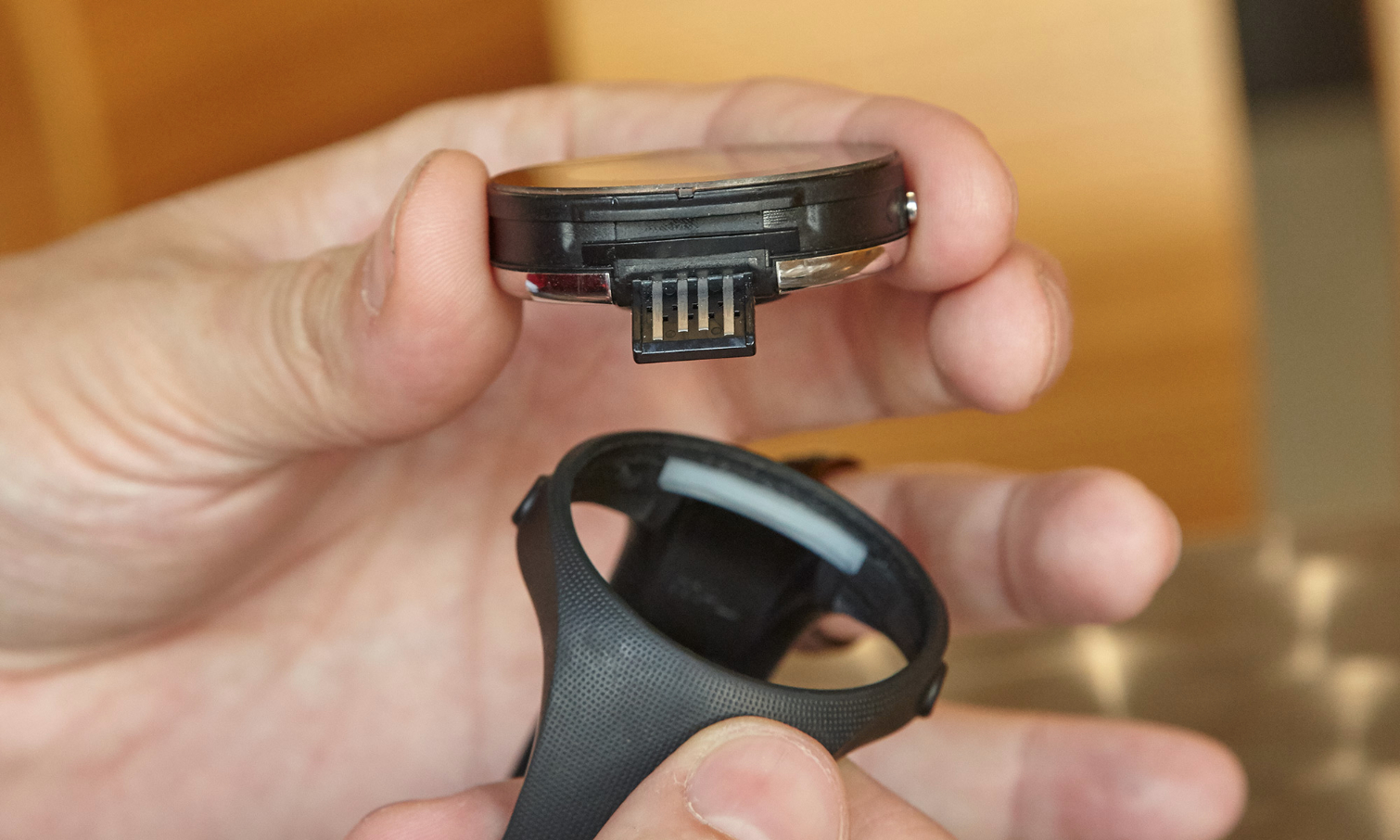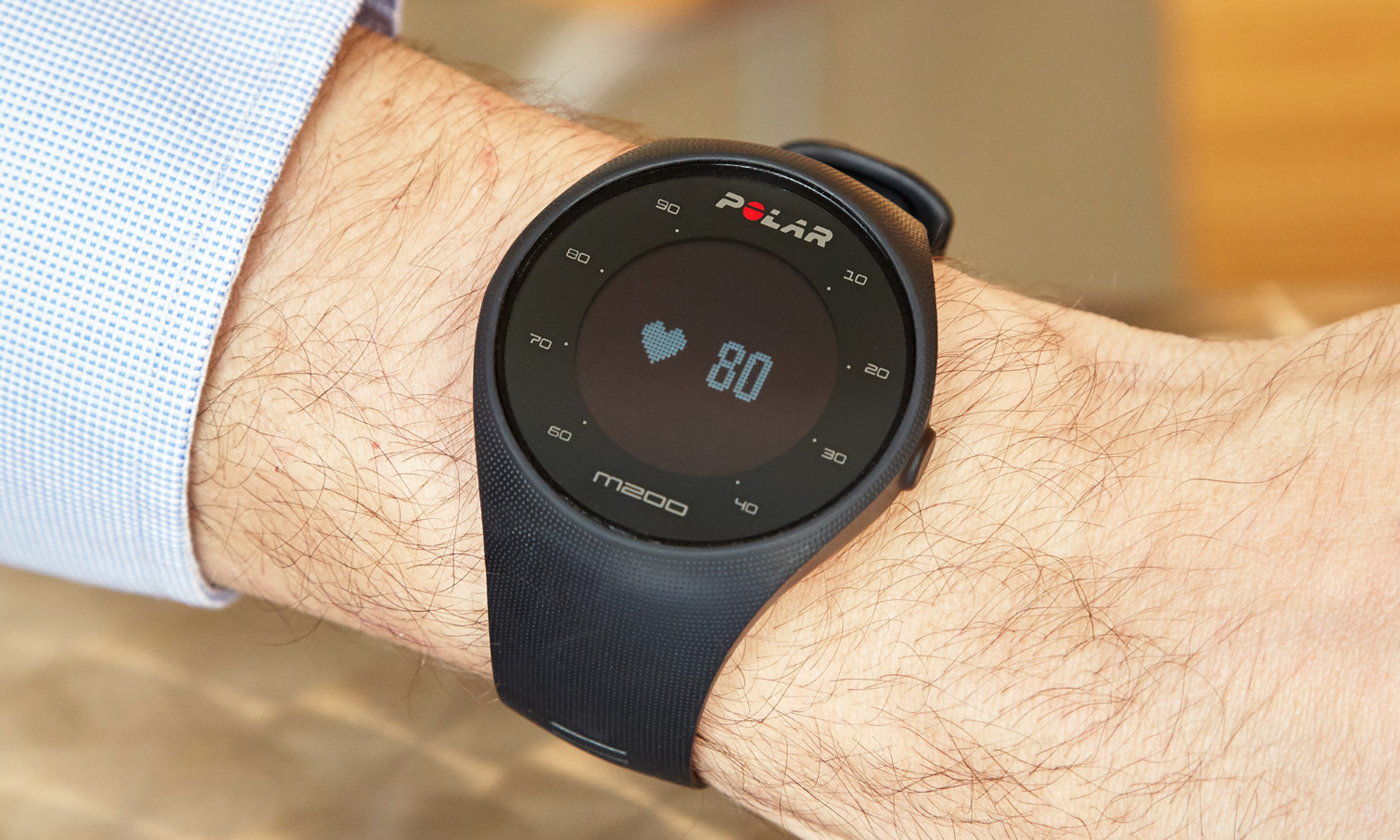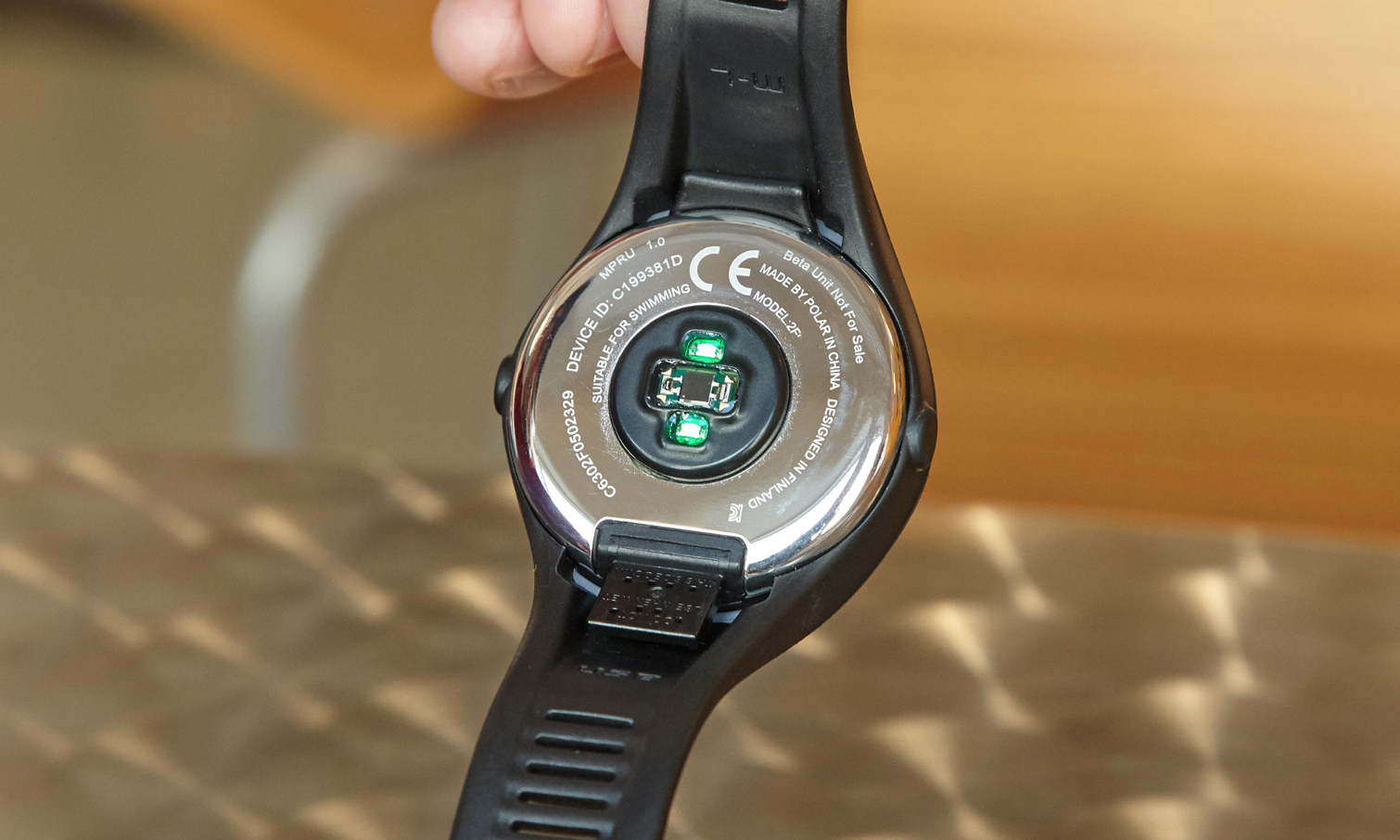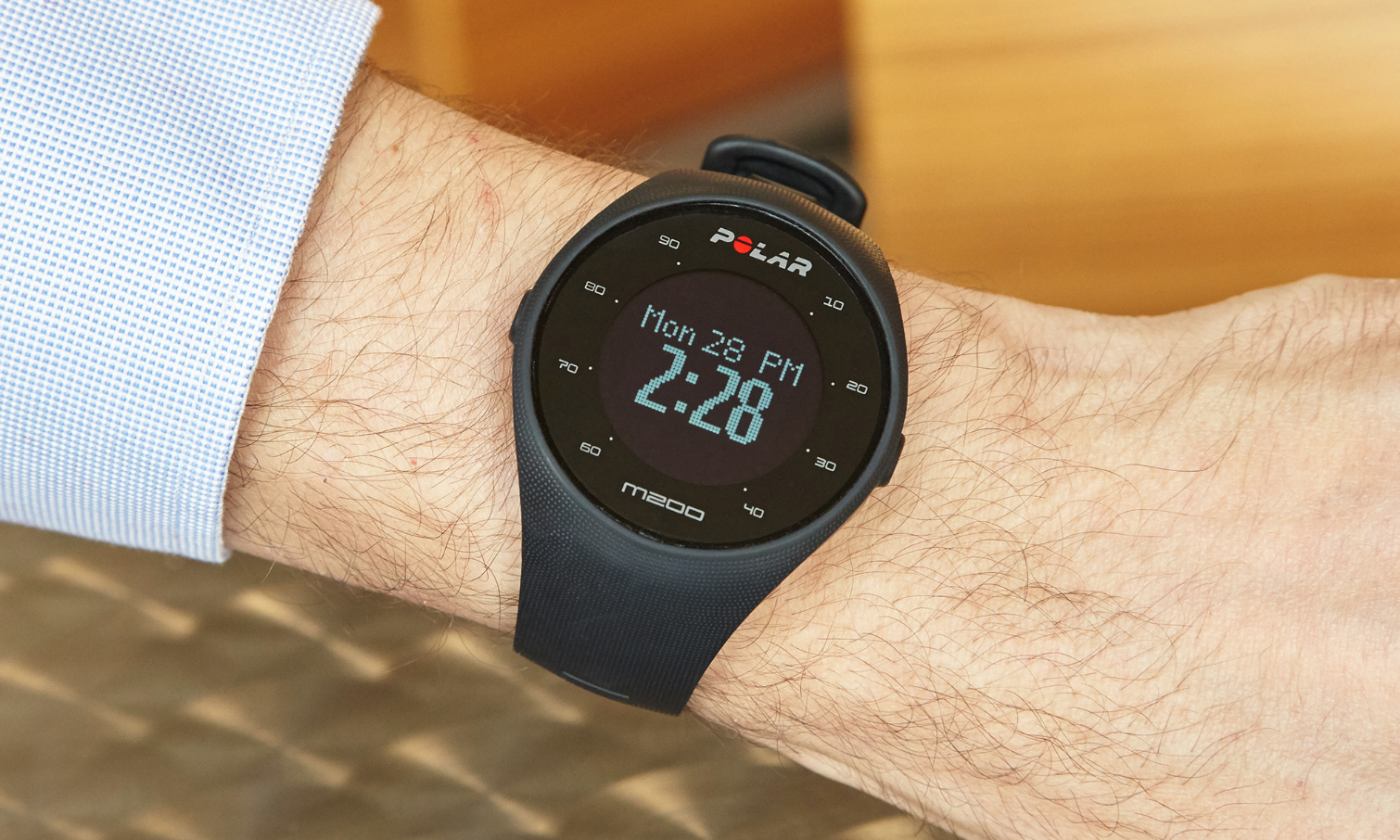Tom's Guide Verdict
While it looks a bit bland, the inexpensive Polar M200 is a capable GPS running watch with both a heart-rate monitor and smartphone notifications.
Pros
- +
Built-in heart-rate monitor
- +
Inexpensive
- +
Accurate tracking
- +
Smartphone notifications
Cons
- -
Bland design
- -
Too big for everyday wear
Why you can trust Tom's Guide
Heart rate is a key measure of both the intensity of a workout and overall health. Polar has always done that well with its chest straps but has lagged behind rivals in incorporating that feature into its watches. With its Polar M200 ($149 on Polar.com), an entry-level GPS watch with heart-rate tracking and smartphone notifications, the company is catching up. The M200 is not the most attractive device, placing more emphasis on function and efficient battery life, but it's a good choice for runners on a budget.
Design
Though not ugly, the Polar M200 has an unremarkable circular face with one button on each side. There is no touch screen. On the back of the watch, you'll find an optical heart-rate monitor. As a running watch, the Polar M200 looks fine, but it struck me as a bit too casual when I wore it around the office.
The large, 1-inch circular face is easy to read in sunlight. Though the device is touted as an activity monitor you can wear every day, the Polar M200's large face (1 inch viewable), thickness (0.5 inch) and weight (1.4 ounces) make it a bit too big to wear under a dress shirt. Those measurements are more in line with those of the TomTom Cardio Spark 3 and the Garmin Forerunner 35 (which is slightly bigger) than with a slimmer, Fitbit-type fitness tracker.
The watch is designed so the face separates from the band quite easily. Unlike many other watches, which have either a USB port or metal contacts, the M200 sports a USB connector that you plug directly into a charger.
I loved this feature, as I was able to charge the M200 by plugging it directly into my laptop. Most other watches require special charging cables — Polar includes one, though you don't need it — so this feature definitely gives the M200 an edge. It also makes it easier to wash the watch after a run, as it's waterproof and suitable for swimming (per ISO testing).
MORE: Best Fitness Trackers for Running, Swimming and Training
Display
The M200 has a simple E Ink black-and-white display with large digits and backlighting. Those features make it easy to read during runs, day or night. Still, I wish the display looked a little more polished, similar to the one on the colorful Samsung Gear Fit 2.
Setup & App
Polar has a strong website and a solid app for setting up the watch and maximizing your use of it. The app, called Polar Flow (iOS and Android), syncs with the M200 via Bluetooth. It also syncs with the Strava and MapMyFitness apps. MyFitnessPal syncing is available only to iOS users right now, but there are plans to add support for Android.

Looking at the app before runs can help you plan your training, and you can review your results and daily activity levels afterward. Those activity levels also include sleep activity, assuming you keep the watch on 24/7.
Within the Polar Flow app, a view of the run shows a lot of key stats, including a graph of your pace and a map of the run. One thing I found lacking on the app was run splits (though I found it on the web service).
Polar has two key features that take advantage of the M200's GPS and heart-rate monitor. Running Index measures your fitness based on how hard your heart has to work to cover a certain distance or pace. The Training Benefit score looks at how hard you're pushing yourself to calculate what kind of benefit you'll get. For example, after an extremely intense workout, my Training Benefit was "Maximum Training+" and my Running Index was "Elite."
MORE: The Best GPS Watches for Sports and Athletics
Training Programs
Polar has training programs for most of the popular distances (5K, 10K, half marathon, etc.) that can be loaded onto the M200. The app also lets you add custom workouts for more than 100 types of activities (running, biking, rowing and so on). I was able to easily add interval training, a great way to improve speed and stamina.
Performance
The M200 performed well as a running watch. I took it out over the course of two weeks and ran during both day and night in all types of weather, and I saw fairly consistent results.

Initiating a run takes a one-button push to access the first sport stored on the watch. Then, the M200 acquires your GPS position and heart rate, with the watch vibrating to let you know when it's locked on. It takes just one more push to start the run. If running isn't your default activity, it may require a few more button presses.
The first time the device is used for GPS, it can take a few minutes to acquire a GPS signal (especially if it's cloudy). On later runs, I found the M200 usually picked up a signal in less than a minute. I had a lot of trouble acquiring a signal on rainy days, with the watch taking up to 5 minutes, though this is a challenge with other devices, too.
I was extremely pleased, however, that once the GPS was locked, it did not lose its location and have to "guess" where I had been; that can throw off your distance and pacing measurements.

Heart-rate measurement is what Polar is traditionally known for, and it did not disappoint with the accuracy shown on the M200's optical-based tool. Compared with the Microsoft Band 2 and the Samsung Gear Fit 2, the M200 was very accurate. There were very few erratic jumps in heart rate, which I often saw when using the Gear Fit 2. Given that I care about measuring my heart rate during runs but dislike wearing chest straps (which are the most accurate), the accuracy of the M200 was good enough for my purposes.
Battery Life

The M200 boasts fairly long battery life. Polar says the device will last through either six days of everyday use (defined as 1 hour of exercise per day with GPS and heart-rate monitoring) or 6 hours of continuous GPS use plus heart-rate monitoring. I used it for daily use and for working out: I would wear the M200 for 15 hours a day, including a 1-hour run most days. I charged it every few days for an hour each time and never came close to running the battery down.
MORE: Who Has the Most Accurate Heart Rate Monitor?
Smartphone Notifications
Notifications from other apps, texts and calls are included on the M200, but they seem like more of an afterthought. I would not recommend you purchase this over another running watch just for this feature.
The notifications are most helpful during everyday use to alert you to phone calls, texts or notifications of when someone likes your pictures on Instagram, among other things. After the first time an app passes a notification, you can mute that app from the Polar Flow app. I found it a bit limiting that I couldn't mute all of the apps until after their first notification passed through.
Also, when receiving a phone call, I was unable to decline the call and reply with an automated text, which is one of my favorite features of the Samsung Gear Fit 2. Hopefully, future software updates can enhance these capabilities.
Bottom Line
At $150, the M200 is a great value, delivering precise GPS and heart-rate monitoring as well as fairly solid battery life. It's also less expensive than the Garmin Forerunner 35 ($199) and the TomTom Spark 3 Cardio ($189), which offer comparable features. The M200 makes up for its lack of finesse with accurate GPS and heart-rate monitoring. It's a great find for beginner runners or more experienced runners on a budget. But you'll also want to invest in a set of the best running shoes for improved performance gains.

